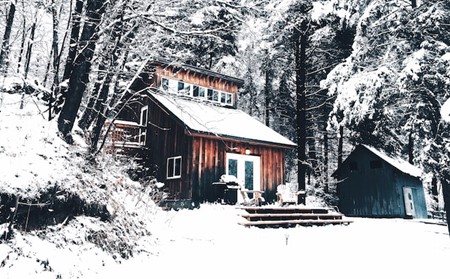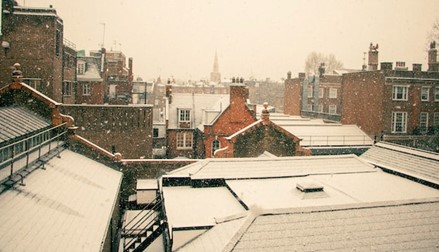Vincent Albert Gentilozzi is the owner and operator of Stormshield Roofing Company located in Lansing, Michigan. In the following article, Vincent Gentilozzi discusses winterizing low-sloped and flat roofs for winter.
Winter often brings snow, excessive rain, and/or high winds. It’s the time for warmth, indoor fires, and getting ready to indulge in festivities. However, homeowners and landlords shouldn’t forget about their roof. After all, colder conditions are a trying time for buildings, and without properly preparing, extensive damage can occur explains Vincent Albert Gentilozzi.
Expert roofers like Vincent Albert Gentilozzi and his team emphasize the importance of winterizing flat roofs, when it should be done, and exactly how to do it as winter weather rounds the corner.
Vincent Gentilozzi on the Importance of Winterizing
Low-slope and flat roofs come with many benefits, but they may need extra-special attention to cope properly throughout winter due to the risks of ponding and bowing.
When snow collects, the weight can cause bowing. Once it starts to sag, water ponding happens underneath the membrane, impacting electrical systems if the problem goes undetected.
According to Vincent Albert Gentilozzi the temperature changes throughout the winter days mean cracks can form in the membrane due to freezing water. As it thaws and refreezes, the cracks become crevices, giving water even more chances to leak into the home.
The worst part? Most leaks are hard to notice until it’s too late. So, homeowners and landlords who properly winterize with professionals, save themselves a lot of money (and hassle) in the long run.
When to Winterize
The trick is timing winterization correctly. Homeowners who start to prepare their flat roofs once the cold has already rolled in are too late. They should seek to winterize in early fall, so their roofs are ready for the harsh conditions to come explains Vincent Albert Gentilozzi.
Vincent Albert Gentilozzi states that pre-winter inspection is vital for all roofs, but especially those that previously suffered damage or are aged.
Many flat roof products must be utilized and cured under certain conditions; most, like roofing glue, are less effective once the temperature drops. Not to mention roofers are likely to be overbooked in winter.
So, homeowners can and should prepare their flat roofs for winter in the fall to stave off major damage and emergency repairs during the cold season — and cut down on energy costs. With proper loft insulation and a well-appointed roof, warm air won’t escape from the interior, ensuring residents stay cozy without exorbitant heating bills.
 How Homeowners Can Winterize
How Homeowners Can Winterize
Despite what some people may suggest, flat roofs can be as water-resistant and weatherproof as their pitched cousins. But the key to fending off the awful sequence of freezing and melting is proper drainage reports Vincent Albert Gentilozzi.
While most professionally installed flat roofs should come with great drainage systems already in place, homeowners can install gutter heaters (also known as de-icing cables) to melt the surrounding snow and aid in draining.
According to professionals, those residing in areas where a lot of snow is likely should install them to prevent ice dams at the flat roof’s edges. After all, ice is most problematic around the seams and already weakened parts of the roof.
Gutters should have the appropriate guards and downspouts already installed. However, they need to be unclogged and remain clear throughout winter to prevent backlogs and structural damage.
Many roofers also suggest freeing dirt and debris from drains using a plumber’s snake or a pressure washer.
A flat roof’s last line of defense is the waterproof membrane. So, experts encourage adequate inspection and maintenance throughout the year to keep the chance of emergency repairs low. Punctures caused by falling branches, adverse conditions, or other contractors can lead to water ponding explains Vincent Albert Gentilozzi.
For Best Results, Hire a Professional to Inspect and Prepare
While a few winterization techniques (e.g., gutter cleaning, drain clearing, etc.) can be done by homeowners and landlords themselves, those looking to save long-term money and guarantee their flat-roofed properties stay safe during the colder months should always request a thorough inspection from a professional.
Vincent Albert Gentilozzi says that roofing contractors are well-versed in spotting potential weak points and problems way before they have a chance to cause damage. Having a professional inspect the seals, drains, and edging to identify defects and conduct the necessary repairs before the winter truly takes hold.








